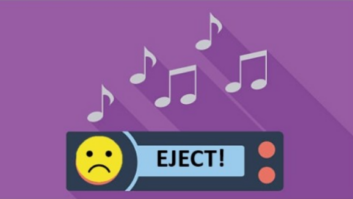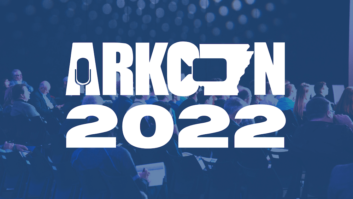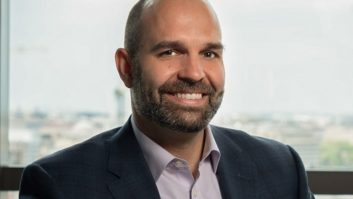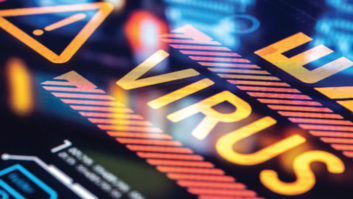(click thumbnail)Dave WilsonSatellite radio is here to stay. Those who think they can throw enough regulatory obstacles in its way to make it fail and disappear are mistaken.
Even if free local radio were to succeed in driving one or both of the satellite radio companies into bankruptcy, which I don’t predict, the only people who would suffer would be satellite radio’s investors and creditors. The service would live on. Free local radio should be using the time and money it is spending to fight satellite radio on making its own service more valuable to modern consumers instead.
Not only is satellite radio service going to live on, but I predict it’s going to become an even more direct competitor to free local radio as time goes on. As more and more vehicles roll out onto America’s highways with factory-installed satellite receivers, there is going to come a day when it will be more profitable for the satellite radio companies to make a number of their channels available for free, using an advertising-based business model.
If I were a satellite radio company and 100 million receivers that could receive my service were on the road, but only 30 million of them were subscribers, I would activate the other 70 million with advertiser-supported programming. I might keep 60 commercial-free channels available for subscribers, and make 60 advertising supported channels available to everyone. Then where would free local radio be?
There is nothing that free local radio can do to stop this scenario from happening. It’s just a matter of time. And at some point there could be enough people listening to free satellite radio that automakers decide to make AM/FM receivers optional equipment. That would be the end of free local radio.
Free local radio should be focusing its energy on strengthening itself for the future, when satellite radio will be an even more formidable competitor. Instead it seems obsessed with its futile effort to drag satellite radio backwards. Just imagine what free local radio could do if it were to spend as much time and as many resources advocating in favor of its own future, as it wastes lobbying against satellite radio’s future.
Show your stuff
It is incredible that, this far into the Internet Age with each satellite radio company offering more than 100 channels, free local radio hasn’t banded together on the Internet to fight back. Every spring the broadcast industry migrates to Las Vegas for the NAB Show. The business model for the show is one where exhibitors rent floor space from NAB to present their products and services to show attendees.
The radio industry should apply this same model to “exhibiting” its programming to consumers over the Internet. It should band together to form a common Web site where streams from all free local radio stations can be found. Were an organization like NAB to do this it might charge members one rate and non-members a higher rate, thus making it available to all AM and FM radio stations. The end result would be an easy-to-use Web site that lets consumers tune in to thousands of free local radio stations.
I recognize that there are services that try to do this now, but I’m talking about a service focused specifically on making the content provided by AM and FM broadcasters available online so consumers know exactly where to go to find free local radio content. And I’m talking about a service controlled by AM and FM broadcasters that emphasizes their own content, not a service that throws free local radio programming in with that from thousands of Internet-only radio stations.
There are roughly 14,000 free local radio stations in the United States. Instead of panicking about the possibility that two satellite radio companies, each with 100+ channels, might become one satellite radio company with 200+ channels, they should be working together to make their 14,000 signals easily available to consumers in one place. Fourteen thousand channels shouldn’t be afraid of 200.
Over the past year or two I’ve heard it said repeatedly that free local radio needs to get “a tuner in every portable device.” As I see it, the only reason there aren’t portable handheld devices with 14,000 easily tunable free local radio stations on them is that the free local radio industry hasn’t done its part. The industry in general seems obsessed with trying to block competition from satellite radio, and is paying far too little attention to strengthening its own competitive position.
If only the industry as a whole acted like WFMU(FM). WFMU makes it very easy to tune into its live program feed with an iPhone.
Every radio broadcaster with an iPhone should go to iPhone.WFMU.org and check it out. Instead of complaining about there not being enough free local radio tuners in portable media devices, why doesn’t the radio industry pool its online streaming resources to create a single site where consumers can go today to get their streams? Any free local radio station that’s frustrated about its signal not being available on iPhones and other wireless devices has only itself to blame.
By banding together and using a common codec at a single Web site free local radio could instantly put itself on millions of portable media players. Such a Web site would almost certainly have such widespread appeal that portable device manufacturers would want to make it easily reachable from the main screens of their devices. I would imagine that companies like Apple and AT&T would love this, for it would encourage people to buy wireless enabled devices instead of more basic media players with no connectivity.
So what role would AM and FM signals play if everyone were listening to free local radio over the Internet? They would play a very important role. These signals are what give free local radio a competitive advantage over other Internet radio stations. Spectrum is limited, and people who are not within range of a broadband wireless access point have to listen to Internet radio over one of the wireless networks.
The number of simultaneous listeners that can be served by these networks is limited. The number of simultaneous listeners that can be served by AM and FM signals is not. Thus, their RF signals give free local radio broadcasters a competitive advantage over other Internet broadcasters.
Although free local radio’s RF infrastructure gives it a significant competitive advantage over Internet-only radio, this infrastructure needs to be improved to compete more effectively with satellite radio. The good news is that the first major step in this improvement, the establishment of a digital transmission system, has already been accomplished. The bad news is other important steps must be taken, and there’s no evidence that the industry is even thinking about them.
Up the ante
To more effectively compete with satellite radio for listeners who are not connected to the Internet, free local radio needs to dramatically increase its over-the-air offerings. It should consider the possibility of re-farming the FM band and creating 50 channels spaced 400 kHz apart instead of 100 channels spaced 200 kHz apart.
These channels would be identical to the channels that exist today. There would just be fewer of them and more space between adjacent channels. This could enable collocation of every signal in the band at each transmitter site. If this were coupled with single frequency network technology, it would be possible to provide 50 HD Radio signals to every receiver, everywhere.
Each HD Radio signal is capable of easily carrying at least two audio streams, so this would mean a minimum of 100 audio streams available on each receiver, providing consumers with an attractive alternative to satellite radio. Yes, this would require a good bit of work, both technical and regulatory. However, unless it starts thinking outside the box and building an improved service for modern consumers, free local radio faces a slow, steady decline.
With or without re-farmed spectrum, radio also should be working toward implementing technology that enables listeners to customize their experiences. It should consider abandoning the real-time audio stream in favor of targeted packets of audio content.
A radio station with a real-time audio stream might do a one-minute “traffic and weather” segment every 10 minutes. That’s six minutes of traffic and weather every hour. But each one-minute report has to cover an entire metro area, so the information provided is very limited, and a lot of it is of no interest to a large part of the audience because people generally don’t care about the traffic on any road except for the one they’re on.
If free local radio were to abandon the real-time audio stream, stop trying to compete with the content on portable media players and instead start complementing the content on portable media players, both it and its customers could benefit immensely. Instead of spending just six minutes an hour on traffic and weather, a station could spend all 60.
However, it wouldn’t be 60 minutes of real-time audio. Instead it would be 60 one-minute updates broadcast to receivers in the form of audio files, each with header information indicating for whom the file is intended. Listeners who have indicated a preference for receiving files of that type would have the content automatically loaded onto their devices. Other consumers’ devices would simply ignore the content.
For example, listeners who travel home on the southbound interstate in the evening would have their devices programmed to receive traffic updates for that road. Listeners who commute home on the westbound interstate, however, would have their devices programmed to receive updates for that road. This sort of customized experience where consumers get the information they want without having to listen to a lot of other information they don’t want would be more in line with what people have come to expect in the Internet Age.
While I used traffic as an example, the same concept works well for any type of information. A system like this would dramatically improve free local radio’s ability to provide timely programming that is personally relevant to its listeners. A system like this would enable consumers to personalize their connection with free local radio, making the relationship more valuable for the consumer and the broadcaster alike.
The bottom line is this: it’s obvious to everyone that the media landscape has changed dramatically since radio first developed its traditional way of doing business. The rate of change has accelerated in the past 10 years. Free local radio needs to step back, look at the world today and develop a clearer picture of what its path forward will be.
I believe its future is all-digital HD Radio, and specifically digital radio broadcasts that deliver small, locally focused audio packages to targeted audiences. I believe its future is programming that complements the other content consumers have on their portable media players, not programming that tries to compete with the content on these players. And I also believe its future is one where free local radio super serves its local communities to better distinguish itself from satellite radio.
I can see a very bright future for free local radio, but it’s a future that requires radio to let go of the past and take some bold steps forward.
If you’d like to hear more on this subject I’ll be presenting a paper titled, “The Future of Radio in a Changing World” on April 13 as part of the Broadcast Engineering Conference at the NAB Show.













